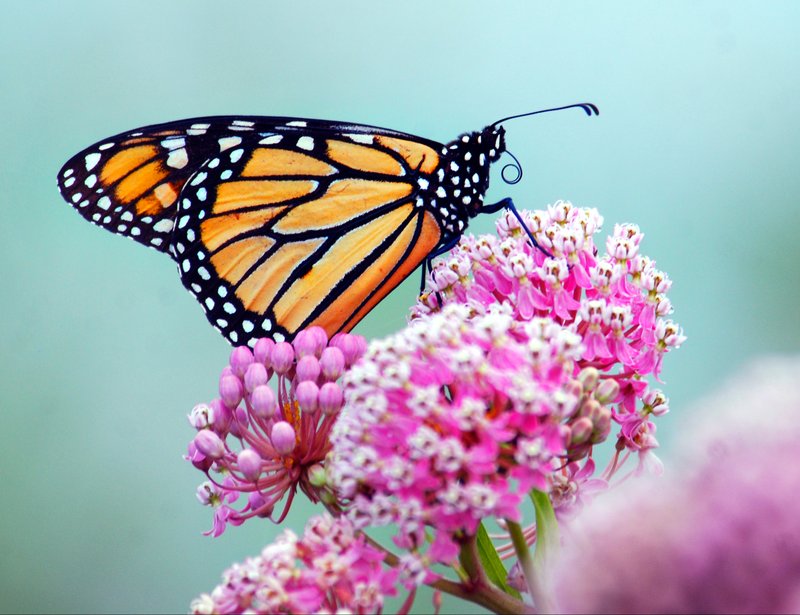SILOAM SPRINGS -- Most would think little of mowing down or destroying milkweed plants which may not attract a lot of attention most of the year and, perhaps, especially so when the plants in question are swamp milkweed growing along the shores of a city-owned recreational lake like Siloam Springs City Lake. But, like most plants, they have a purpose and are more important than people generally realize.
The swamp milkweed in question is pretty when it flowers but, the rest of the year, maybe not so much. Mowing down the weeds could improve accessibility to the water's edge and make the area more attractive to those who might like to use the area for fishing, picnicking or other outdoor acclivities along the lake side. But there is a downside to mowing off the plants.
Milkweeds, and especially the swamp milkweed, are a host plant and food source for the monarch butterfly which migrates from North America to central Mexico.
According to the National Wildlife Federation, one of the biggest causes of declining numbers of monarch butterflies is the increasing scarcity of milkweed, the monarch caterpillar's only host plant. The butterflies lay their eggs on the milkweed plants and the caterpillars feed on the plants before entering the pupal stage and becoming adult monarch butterflies. Without the host plant, the butterflies cannot reproduce.
And so the swamp milkweed growing along the shores of City Lake have an important purpose. Not only do their flowers provide nectar for butterflies, bees and other insects, the plants there and elsewhere are crucial to the existence of the monarch butterfly, a butterfly we all love to see.
General News on 09/02/2015

